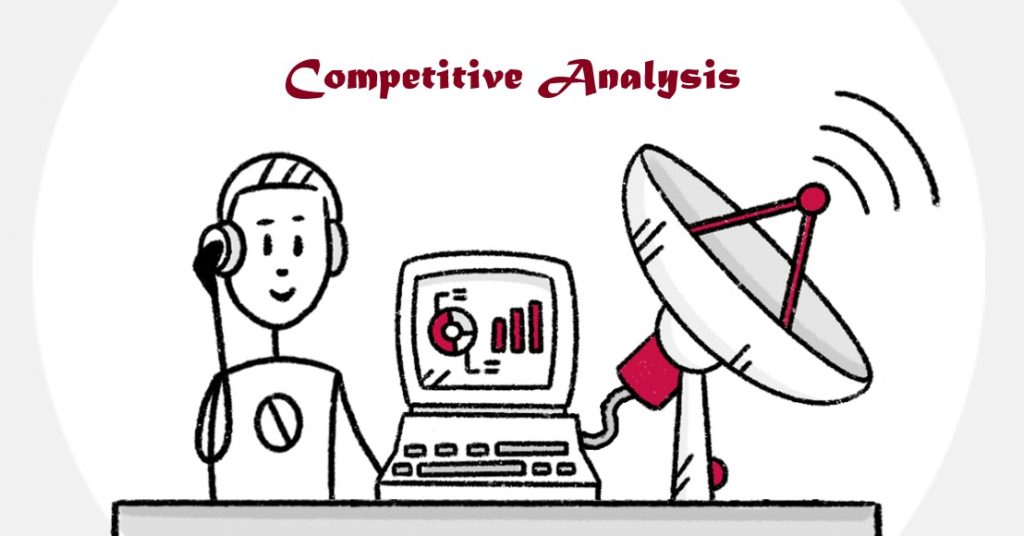Understanding how to conduct a competitive analysis is essential for businesses looking to thrive in today’s competitive landscape. Conducting a comprehensive competitive analysis helps businesses assess their market position, identify key competitors, and gain insights into industry trends. It also provides valuable information on competitor strengths and weaknesses, allowing companies to make informed strategic decisions. Whether you’re launching a new product, expanding into a new market, or reassessing your current position, learning how to conduct a competitive analysis is critical for success.
Defining the Scope of Your Analysis
Before diving into a competitive analysis, it’s important to define the scope of the analysis based on your business goals. Businesses must decide which competitors to focus on and what metrics are relevant to measure. Typically, the analysis will include direct competitors offering similar products or services and indirect competitors that offer alternative solutions. Knowing how to conduct a competitive analysis requires looking at both types of competition, as they all impact your market share and overall strategy.
For example, if you are in the technology sector, you might analyze direct competitors who sell the same software, as well as indirect competitors offering different technological solutions to the same problem. Identifying the right competitors ensures that your analysis is comprehensive and provides actionable insights.
Analyzing Competitor Products and Services
One of the most critical steps in how to conduct a competitive analysis is evaluating your competitors’ products and services. This involves understanding what they offer, how they position their offerings, and how their products compare to yours in terms of features, quality, and pricing. A thorough product analysis will reveal areas where your competitors excel and where they fall short, providing opportunities for differentiation.
By analyzing product quality, functionality, and customer feedback, you can identify potential gaps in the market. Additionally, studying competitor pricing strategies can help you understand their value proposition and guide your own pricing decisions. Price is often a key differentiator, and knowing how your competitors set their prices can provide insights into customer expectations and willingness to pay.
Understanding Competitor Marketing Strategies
Another essential aspect of how to conduct a competitive analysis is examining competitor marketing strategies. Businesses must analyze how competitors promote their products, what channels they use, and what messaging resonates with their audience. This includes looking at social media presence, content marketing, email campaigns, and advertising strategies. Understanding how competitors communicate their value can help you refine your marketing efforts and identify areas for improvement.
Analyzing the effectiveness of competitor marketing campaigns can also provide insights into market trends and consumer preferences. For instance, if a competitor’s social media engagement is high, it may suggest a growing interest in specific products or services. Incorporating these insights into your own strategy can help you stay ahead of the curve and connect more effectively with your target audience.
Identifying Competitor Strengths and Weaknesses
A crucial part of learning how to conduct a competitive analysis is identifying your competitors’ strengths and weaknesses. This involves looking beyond product features and pricing to assess other key areas such as customer service, brand reputation, and operational efficiency. Understanding where your competitors excel can provide benchmarks for your own performance, while recognizing their weaknesses can highlight opportunities for your business to stand out.
Competitor weaknesses could include poor customer service, limited product variety, or slow response times. By focusing on these weaknesses, your business can offer superior service or more comprehensive solutions, attracting customers who may be dissatisfied with competitors. On the other hand, analyzing strengths can inspire your company to adopt best practices or improve existing processes.
Evaluating Market Positioning and Branding
When learning how to conduct a competitive analysis, evaluating market positioning and branding is a crucial step. Market positioning shows how competitors present themselves, while branding focuses on their identity and emotional connection with customers. Assessing competitor positioning helps you understand their target audience and how they differentiate in the market.
Analyzing branding strategies reveals whether their messaging aligns with their positioning and how well they connect with customers. For example, if a competitor positions itself as premium but fails to deliver quality, it creates an opportunity for your business. This insight allows you to develop more targeted messaging and build a brand identity that resonates with your audience.
Leveraging Data and Tools for Competitive Analysis
Conducting a competitive analysis requires accurate data. Tools like SEMrush, Ahrefs, or Google Analytics provide valuable insights into competitor performance. These platforms track traffic sources, search engine rankings, and online visibility, helping you understand competitor strengths in digital marketing. Using these tools streamlines your research and offers deeper insights into competitors’ digital presence.
Additionally, social media analytics and customer review platforms reveal how competitors engage with their audience and address concerns. Data from these sources helps identify trends in customer satisfaction, pain points, and emerging needs. Leveraging this data clarifies how to improve and differentiate your business strategies.
Developing Strategic Insights from Your Analysis
Once you complete a competitive analysis, the next step is turning insights into strategic decisions for your business. The goal of competitive analysis is to use gathered information to refine your strategies. This could involve tweaking product features, adjusting pricing, or improving customer service.
For instance, if competitors excel at social media but lack in customer service, you can focus on exceptional service to gain an edge. If competitors outperform you in pricing or distribution, reassess cost structures or partnerships to remain competitive.
Staying Competitive in a Changing Market
Knowing how to conduct a competitive analysis is a skill that must be applied regularly. Markets change quickly, and competitors are constantly evolving. As such, competitive analysis should be an ongoing process rather than a one-time exercise. Continuous monitoring allows businesses to stay informed about new developments, identify emerging competitors, and respond proactively to changes in the market.
Regular competitive analysis not only helps you stay informed but also ensures that your business remains agile and adaptable. This adaptability is crucial for long-term success, as businesses that are slow to react to market changes or competitor strategies risk losing their competitive advantage.
Learning how to conduct a competitive analysis is essential for businesses looking to stay ahead in an increasingly competitive market. By defining your scope, analyzing competitor products, assessing marketing strategies, and identifying strengths and weaknesses, you can gain valuable insights that inform your business decisions. Using data and tools to support your analysis ensures that you make informed strategic moves that improve your market position. Ultimately, continuous competitive analysis helps businesses remain agile, responsive, and better equipped to achieve long-term success.


